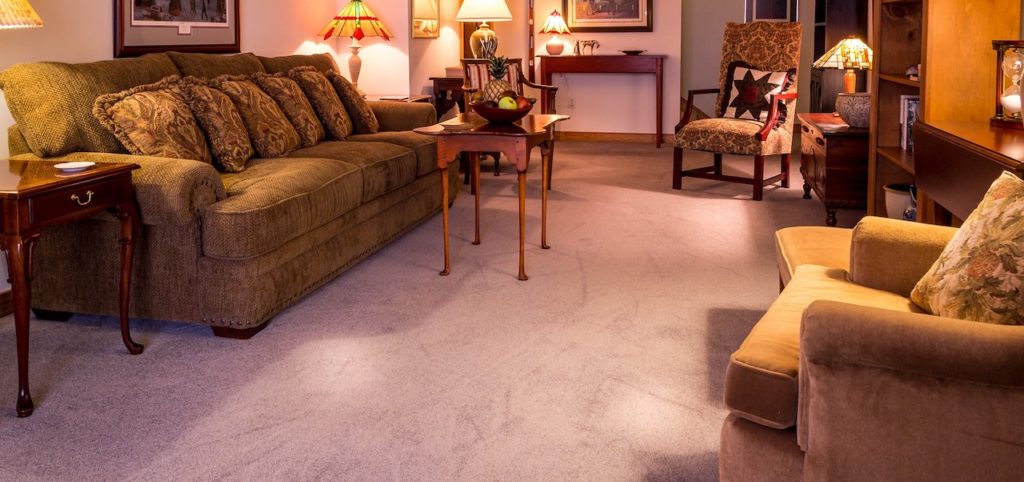You go to great lengths to keep your home looking nice, tidy and clean.
But hold everything: Why are the edges of your carpet dark?
You may notice these dark lines in your carpet (we call them “filtration lines”) next to walls, on staircases and under registers.
But why?
Because your carpet is a filter.
Here’s what you need to know about how filtration lines end up on your carpet, how to avoid them and why you should let a professional carpet cleaning service handle the job.
Where do filtration lines come from?
Homes that have been built since the early 90s are built airtight. Air is constantly flowing and needs to go somewhere, right?
When a wood subfloor and walls are constructed (see the image below), there’s a very small gap where the floor and wall meet.
Remember that gap between the new wall and subfloor? As air circulates through the home, it flows through the gap.
The carpet acts as a filter for the dirt and oils that flow through the air. As they attach themselves to the fiber of the carpet, discoloration occurs. And voila – filtration lines!
The three biggest culprits are:
- Cooking oils.
- Soot from using the fireplace and candles.
- Dirty air filters.
Filtration lines are most prominent under doors that are closed for a lengthy period of time – such as closed-off bedrooms – under heat register vents and, in some cases, around the skirting of furniture and staircase edges.
How to avoid filtration lines
There are some steps you can take to reduce, eliminate, or altogether avoid these dirt-traps. Here’s what you need to do:
- If you’re building a new home or having new carpet installed, have the contractor seal the gap where the subfloor and wall meet (with caulking or tape) prior to carpet installation.
- Clean or replace your furnace filter at least every 3 months.
- Clean the intake filter on air conditioners monthly.
- Have your air ducts cleaned annually.
- Once a month, use your vacuum’s hand tool and concentrate on the edges of carpets.
- Don’t forget to vacuum rooms that aren’t used often, including under closet doors.
- Have your carpets regularly cleaned by a professional. Clean well-used rooms every 6-8 months, and lightly-used rooms once a year.
Trust removal to a professional carpet cleaning service
Filtration lines can be very difficult to remove, and getting rid of them requires a multi-step process.
- First, we use a concentrated high-volume vacuum to remove particles of dirt and contaminated dust.
- Then, we apply a pre-treatment to remove embedded oils and rinse the area with high-water temperature.
- Depending on the fiber type, we can sometimes use an oxidizer or concentrated stain removers.
Don’t try this at home though! You should definitely leave this job to the professionals.
Even then, in some extreme cases, a light discoloration may remain in the carpet.
However, the risk of DIY approaches by homeowners include:
- Permanently setting the stains in the carpet from using the improper chemicals (bought at your local hardware store).
- Solvents eating away at the backing of the carpet – if they aren’t fully extracted out of the carpet.
- Improperly rinsing the carpeting. Spotters and the filtration lines require a high-temperature rinse to successfully remove them from the carpet.
Don’t let the dark stuff get you down
Now that you know what’s causing the dark lines on your carpet, you can take steps to prevent it from happening or call in a professional carpet cleaning service to fix the problem.
Get rid of filtration lines for good.
Have a question or thought about this topic? We would love to hear from you.

